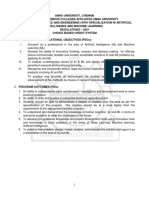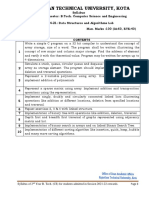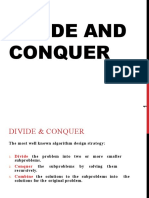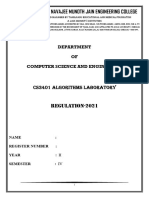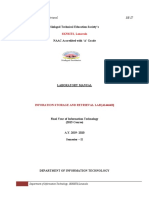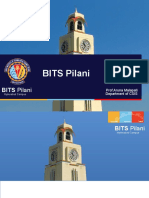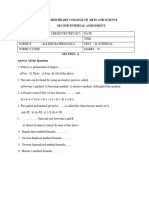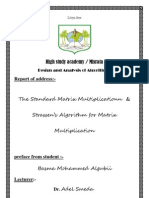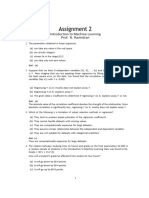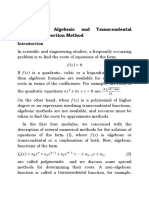100% found this document useful (1 vote)
299 views2 pagesTransform and Conquer, Presorting
The document discusses the concept of transform-and-conquer, which involves modifying a problem's instance to facilitate its solution, with variations including instance simplification, representation change, and problem reduction. It highlights the technique of presorting, which improves the efficiency of algorithms by sorting lists before further operations, and provides examples of its application in checking element uniqueness, computing a mode, and searching for values. The document also outlines the efficiency of various sorting algorithms and their relevance in different problem-solving contexts.
Uploaded by
hima binduCopyright
© © All Rights Reserved
We take content rights seriously. If you suspect this is your content, claim it here.
Available Formats
Download as PDF, TXT or read online on Scribd
100% found this document useful (1 vote)
299 views2 pagesTransform and Conquer, Presorting
The document discusses the concept of transform-and-conquer, which involves modifying a problem's instance to facilitate its solution, with variations including instance simplification, representation change, and problem reduction. It highlights the technique of presorting, which improves the efficiency of algorithms by sorting lists before further operations, and provides examples of its application in checking element uniqueness, computing a mode, and searching for values. The document also outlines the efficiency of various sorting algorithms and their relevance in different problem-solving contexts.
Uploaded by
hima binduCopyright
© © All Rights Reserved
We take content rights seriously. If you suspect this is your content, claim it here.
Available Formats
Download as PDF, TXT or read online on Scribd
/ 2



